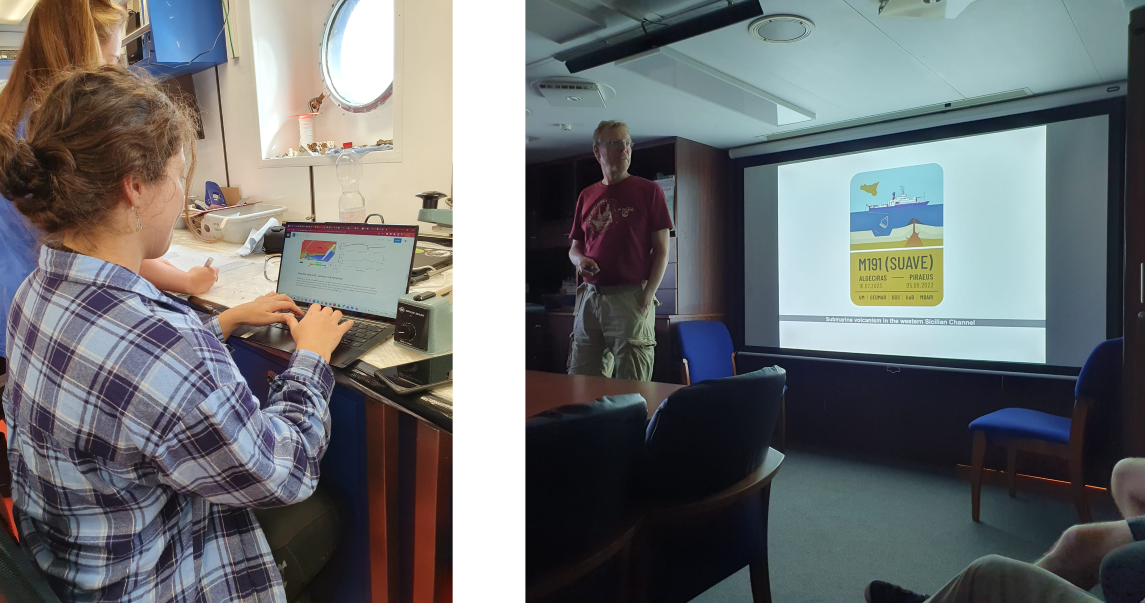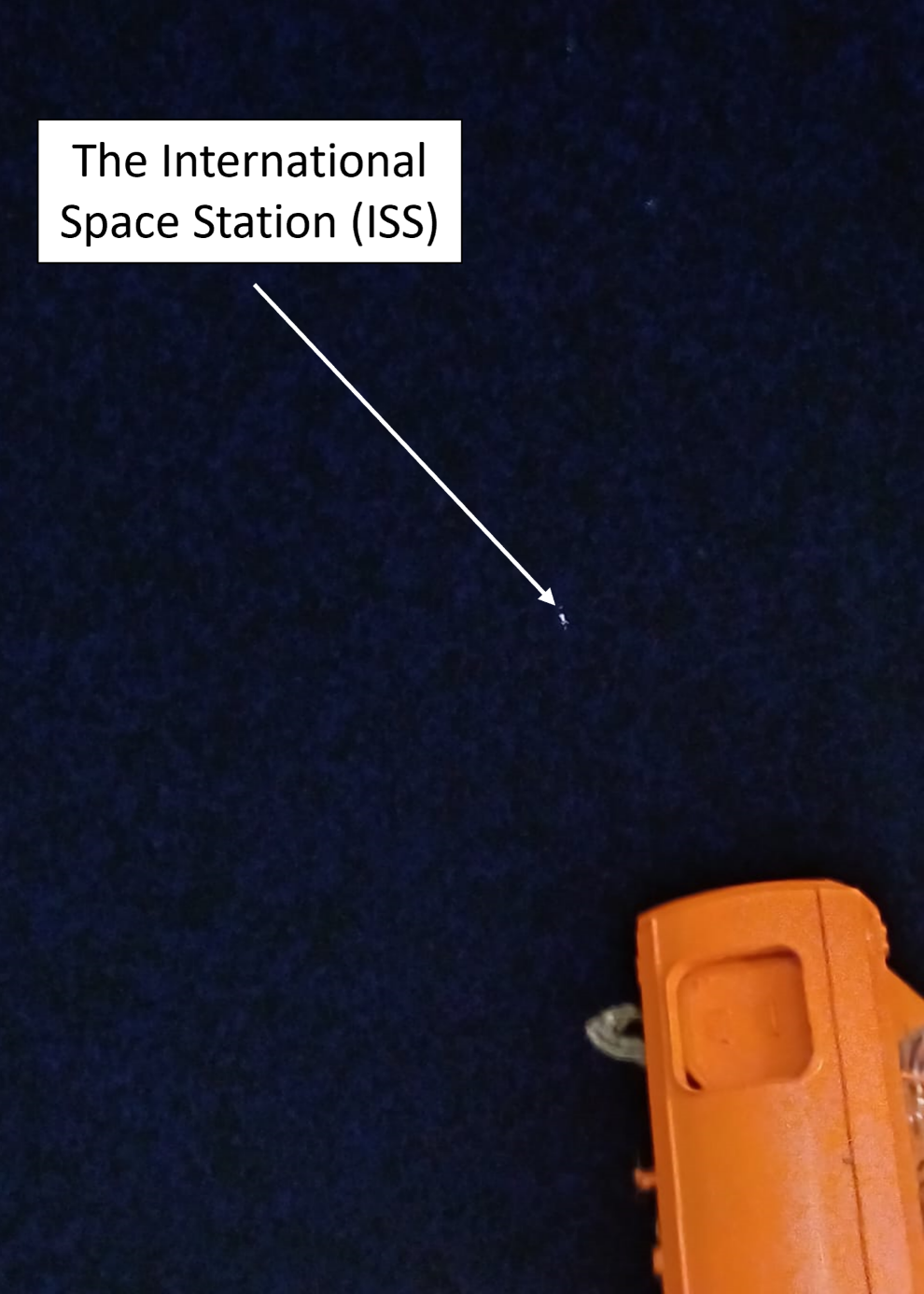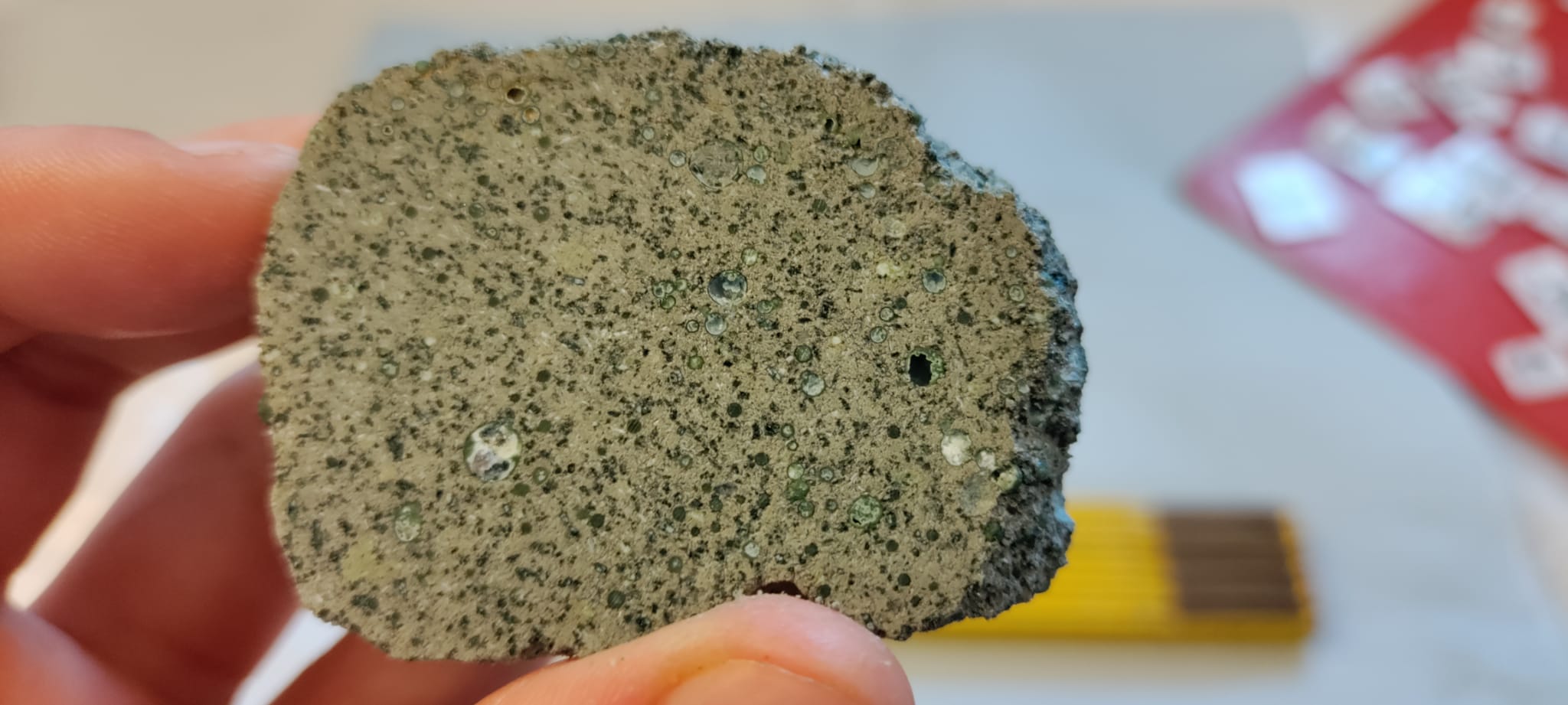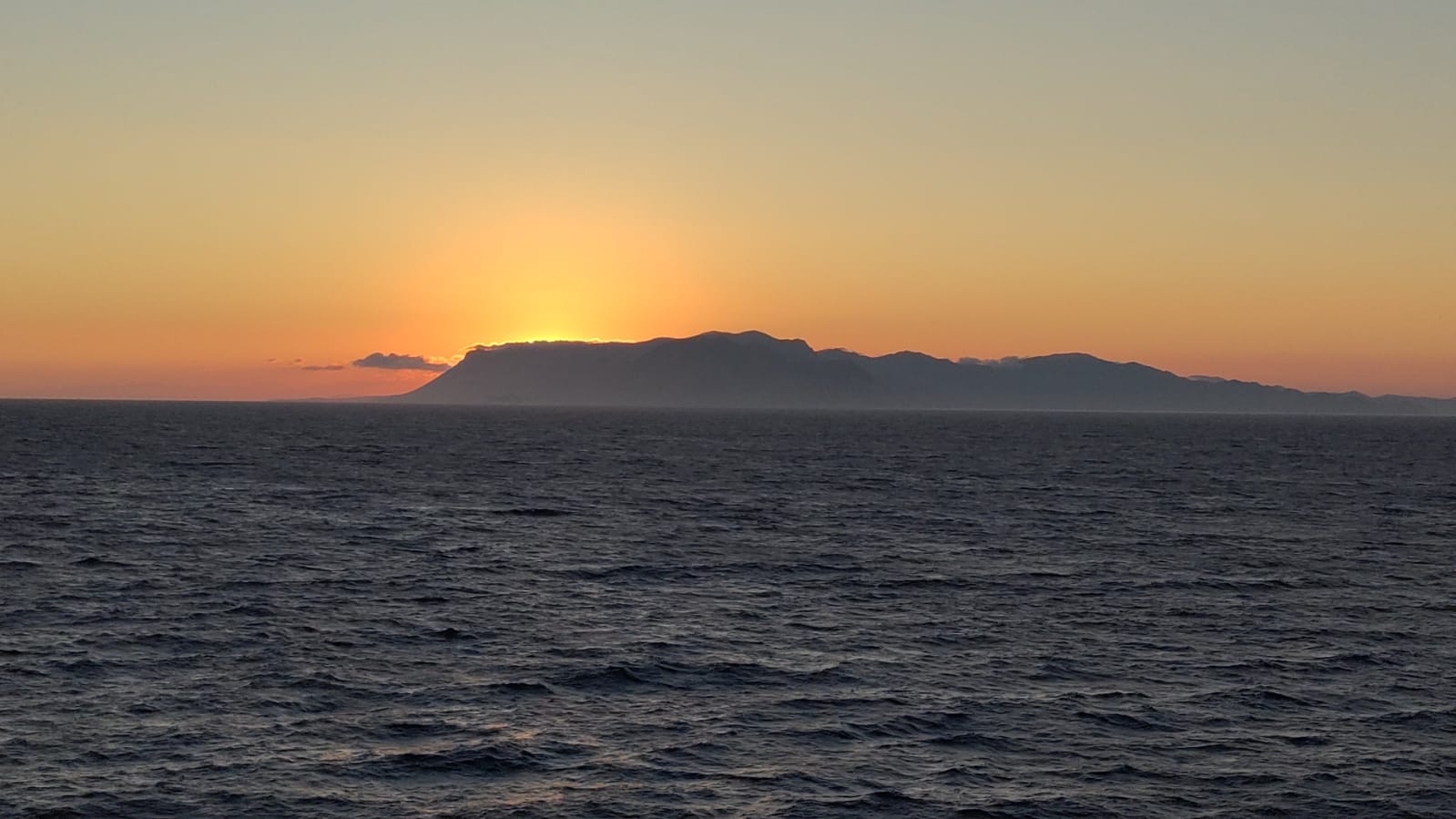Under the sea, under the sea … are there only carbonates waiting for me?
After a very successful first week of dredging and seafloor mapping on the M191 expedition, the team of scientists onboard the R/V Meteor entered their second week in lower spirits. Sea conditions deteriorated for two days, which introduced some of us to seasickness alongside a heavy workload. Our onboard medical doctor was able to help those that felt unwell. Our dredge operations recovered mostly sedimentary rocks with very few volcanic rocks despite dredging at sites mapped in high resolution with the magnetometer and multi-beam echo-sounder (MBES).


It is likely that many of the volcanic sites are relatively old so have been colonised by dense coral networks, impeding the recovery of igneous material. As a result, we recovered a vast number of carbonate rocks, mostly displaying hardground properties and bioclastic encrustations. These rocks will be of great interest to carbonate sedimentologists.

Despite the lull in recovery of volcanic material, not all was lost during the first few days of our second week. The kitchen crew put in a great deal of effort to keep everyone well-fed and lift our spirits with some well-earned treats. Meanwhile the volcanology and petroloigy group redirected their efforts to data inputting and interpreting the sites that we had worked out in order to ensure all observations, interpetations and quantitative data is digitised for further use. Some of the volcanologists also headed to the bridge to assist with dredge site selection. Here, shift leaders are often found working alongside R/V Meteor’s nautical crew to ensure the flow of dredging while the rest of the science team make detailed observations of the samples on deck.

Mirror, mirror on the wall, which rock is the fairest of them all?
As the choppy seas returned to calmer waters, we were gently rocked into success. On the 26th of July, dredging recovered multiple volcanic rocks and we sampled one of the coolest rocks of the cruise thus far! The rock comprised two very distinct zones. One of which was composed of dark, mafic, vesicular (i.e., bubbly) lava with a fine-grained crystalline groundmass and a porphyritic texture (i.e., several individual large crystals within the fine groundmass). The other zone contained yellow, calcareous, hardened sediment with angular pieces of lava (clasts) of different sizes encased within it. These clasts are likely to have originated from the lava zone. Similarly, some sediment infilled sections of the lava through the point of contact. More detail in the sketch below.

The volcanologists and petrologists immediately got to work to figure out what processes had led to the unusual formation. A preliminary interpretation is that the sample displays a peperitic texture, whereby the lava and wet sediments interacted explosively at their point of contact. This results in part of the sediment being included within the lava and parts of the lava being included within the sediment.


To infinity and beyond! A glimpse of the ISS & outreach in full swing
During the M191 expedition, science is in operation 24/7. Between dredges, the science teams work on the findings, make hypotheses and study/discuss the data colelcted from all teams. The team is also involved in outreach, science communication and networking. Whilst our science communication manager, Jacqueline Grech Licari, has worked hard on tweeting daily expedition updates on her profile (https://twitter.com/GrechLicari) and writing blog articles like this one, our chief scientist, Jörg Geldmacher, introduced the R/V Meteor crew to the SUAVE project and the scientific techniques carried out onboard. This went down very well and the crew were encaptivated by his fun and energetic presenting style.

On Friday 28th July, the science team suspended their work for a few minutes and tilted their heads from the rocks to the night sky. A bright moving light passed over the R/V Meteor: the International Space Station (ISS). A moment of reflection followed upon the realisation that we, a team of scientists in a unique and extreme environment, were gazing at a different team of scientists in another extreme and unique location, albeit a very long way away.

Paint with all the colours of the wind: Stumbling on some colourful rocks!
Shortly after our period of reflection gazing at the ISS, a late-night dredge was recovered from a freshly-mapped pockmark field. Located in the submarine volcanic region of Terribile Bank, we sampled some very colourful rocks with blue and green notes. These samples were very different from what we had collected previously. Chemical alteration was pervasive and the rocks were well-rounded and crumbly, with some circular, ooid-like infills. Under closer inspection, these rocks seemed to be releasing an unpleasant smell of rotten eggs, confirming the presence of sulfur (left photo).

Other hydrothermally altered rocks were also recovered including a sample containing altered pumice. These samples had the volcanologists puzzling over the eruptive processes that led to the formation of these rocks. Further analysis will be needed when onshore, however detailed observations, texture and notes/sketches were made by the offshore scientists (middle and right photo).

And…this wraps up another eventful week on the M191 expedition, with only one more week of sample and data collection left before we set sail for Greece. For further information, the weekly reports compiled by the expedition’s chief scientists can be accessed here: https://www.ldf.uni-hamburg.de/en/meteor/wochenberichte.html Be sure to check these out and stay tuned for our third and final weekly update. More surprises might still be waiting for us along the way!
